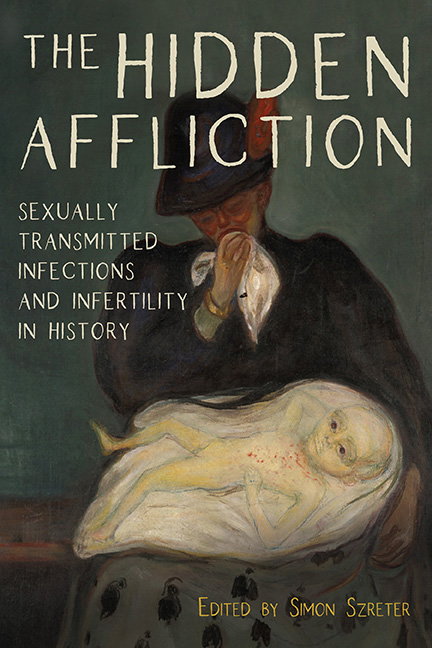Book contents
- Frontmatter
- Contents
- Acknowledgments
- Introduction
- Part One The Hidden Pitfalls in the Early Documentary Record
- Part Two The Biomedical Sciences and the History of the STI Microorganisms
- 3 Bioarchaeological Contributions to Understanding the History of Treponemal Disease
- 4 A Long-Standing Evolutionary History between Chlamydia trachomatis and Humans: Visible Ocular and Invisible Genital Variants
- 5 Chlamydia: A Disease without a History
- Part Three Population Decline in the Global South
- Part Four Infertility and the Specter of Venereal Diseases in Modern Europe
- List of Contributors
- Index
3 - Bioarchaeological Contributions to Understanding the History of Treponemal Disease
from Part Two - The Biomedical Sciences and the History of the STI Microorganisms
Published online by Cambridge University Press: 25 March 2020
- Frontmatter
- Contents
- Acknowledgments
- Introduction
- Part One The Hidden Pitfalls in the Early Documentary Record
- Part Two The Biomedical Sciences and the History of the STI Microorganisms
- 3 Bioarchaeological Contributions to Understanding the History of Treponemal Disease
- 4 A Long-Standing Evolutionary History between Chlamydia trachomatis and Humans: Visible Ocular and Invisible Genital Variants
- 5 Chlamydia: A Disease without a History
- Part Three Population Decline in the Global South
- Part Four Infertility and the Specter of Venereal Diseases in Modern Europe
- List of Contributors
- Index
Summary
Introduction and Aims
Sexually transmitted infections (STIs) remain common today, both in developed and developing countries, and they can have serious consequences for fertility and pregnancy. There are over thirty bacterial, parasitic, and viral STIs. The World Health Organization states that more than 1 million people contract one of eight STIs on a daily basis and that each year, independently of the four incurable STI viruses (hepatitis B, herpes simplex virus, the human immunodeficiency virus, and the human papillomavirus), an estimated 357 million new infections are caused by one of the four frequently occurring and treatable bacterial STIs (chlamydia, gonorrhea, syphilis, and trichomoniasis). The US Centers for Disease Control and Prevention also list pelvic inflammatory disease as a complication of chlamydia and gonorrhea. Clearly, it is possible to have more than one STI. In England, during 2014, almost half a million diagnoses of STIs were made, mostly in heterosexuals less than twenty-five years old and in men who have sex with men. Chlamydia was the most common, and between 2013 and 2014 the highest proportional increases were for venereal syphilis (VS) (33 percent) and gonorrhea (19 percent). A number of factors have been linked to STIs, including travel and migration, a high rate of partner exchange, poor access to health care, social marginalization, and a low socioeconomic status.
Detecting these STIs in the past can be challenging both for scholars who focus on historical documents and for those who work on the evidence for disease gleaned from human remains, either skeletons or preserved bodies. Bioarchaeology describes the contextualized study of archaeological human remains, with paleopathology focusing specifically on health and well-being, as seen in the results of encounters of once-living people with health risks in their environment, including exposure to pathogens.
One of the more popular areas of interest in paleopathology is infectious disease and, within that category, specific infections rate highly as of particular interest—that is, those where the disease-causing organism is known. While it is possible to identify infectious disease changes to body tissues, actually diagnosing what specific infection affected a person in life can be very challenging when studying skeletons, in particular. Nevertheless, of the specific infectious diseases that have been recognized in the bioarchaeological record, leprosy, tuberculosis, and the treponemal diseases are perhaps the most commonly reported.
- Type
- Chapter
- Information
- The Hidden AfflictionSexually Transmitted Infections and Infertility in History, pp. 93 - 123Publisher: Boydell & BrewerPrint publication year: 2019



